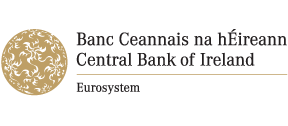The Central Bank of Ireland (CBI) has becomethe latest voice to chime in on the debatearound ETF liquidity in a white paper studying the impact of ETFs on the respective underlying equity and bond markets.
The CBI research, entitled Information and liquidity linkages in ETFs and underlying markets, found the close information links between ETFs and equities creates the potential for “illiquidity contagion” when there is a demand shock, something which would not occur in the fixed income market.
As co-authors Paweł Fiedor, senior economist at the CBI, and Petros Katsoulis, PhD candidate at Cass Business School, said: “We document illiquidity contagion occurring between ETFs and equities but not between ETFs and debt securities since a breakdown of the information link when ETFs become illiquid would affect equities more severely than debt securities.”
This analysis represents a completere-evaluation of ETF liquidity. Up until this point, the key focus has been on ETFs’ impact on the fixed income market following the March volatility where bond ETFsblew out to all-time high discounts.
Subsequent academic papers such as a study, conducted by Efe Cotelioglu, PhD candidate at the Swiss Finance Institute, argued higher ETF ownership in the fixed income space was reducing theability of investors to “diversify liquidity risk”.
It is very unusual for academics and regulators to highlight potential risks in the equity space after ETFs showed no sign of risk during the extreme volatility earlier this year.
What the CBI’s white paper fails to take into account isthe benefits of the secondary marketin providing ETFs with an extra layer of liquidity versus mutual funds which only access the primary market.
This means ETFs can still trade even in the unlikely event authorised participants (APs) refuse to create and redeem due to liquidity reasons or a market is closed.
Highlighting this, when the Greek stock market closed after defaulting on debt payments to the IMF in June 2015, a Greek ETF, the Global X FTSE Greece 20 ETF, continued to trade and offer investors exposure to Greek equities.
As Shane Coveney, partner at Dillon Eustace, told ETF Stream: “The [CBI study] relating to the equity ETFs is not something I would agree with as it seems to discount the trading mechanic of the secondary market rather than directly with the product.
“Such trading does not propagate market shock where the trading is in the secondary market and any trading with the fund by the AP (where securities are not delivered in-kind) would be the same as with any other investment product.”
Instead of focusing on the potential risk of higher ETF ownership and informational links between ETFs and their underlying holdings, regulators in Europe must look at improving fragmentation issues impacting the secondary market.
The lack of a consolidated tape in Europe continues to affect investors’ ability to see the true liquidity picture of ETFs while there is still a lack of consistency around trading standards between the different exchanges.
During the March volatility, for example, the differing rules around circuit breakers across the five major exchanges meant cross-listed ETFs were suspended at different times causing issues for market makers when providing liquidity.
Furthermore, there are different reporting requirements with some exchanges requiring 100% transparency around daily holdings while others do not.
Dillon Eustace’s Coveney said the increasing consolidation in this space should lead to greater alignment. Euronext, for example, recently acquired Borsa Italiana from the London Stock Exchange while the Six Swiss Exchange completed the purchase of Spain’s exchange, Bolsas y Mercados Españoles (BME) in June.
As Adriano Pace, head of equities, Europe, at Tradeweb, said at ETF Stream’sBig Call: Fixed Income event last week, the growing ratio of secondary to primary market trading in Europe will benefit ETFs during periods of extreme volatility.
With a deeper secondary market, there will be less reliance on primary market liquidity. This is where European regulators should focus their attention if they want to improve the overall liquidity in the ETF ecosystem.
Image source: By William Murphy from Dublin, Ireland - THE CENTRAL BANK OF IRELAND [NEW HEADQUARTER BUILDING ON NORTH WALL QUAY]- ALONG BOTANIC AVENUE [JANUARY 2018]-135336, CC BY-SA 2.0





